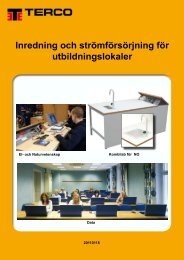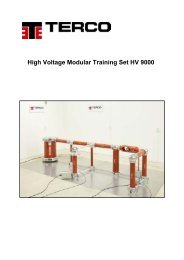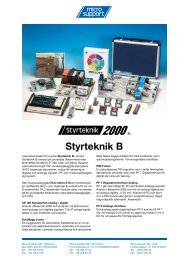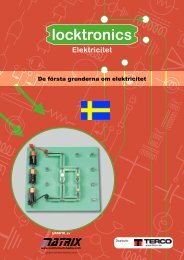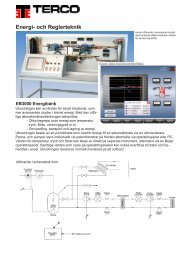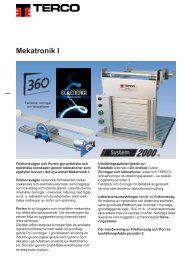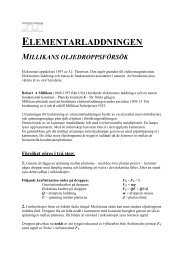High Voltage Modular Training Set HV 9000 - Terco
High Voltage Modular Training Set HV 9000 - Terco
High Voltage Modular Training Set HV 9000 - Terco
You also want an ePaper? Increase the reach of your titles
YUMPU automatically turns print PDFs into web optimized ePapers that Google loves.
Test room<br />
To have a special test room to house the <strong>HV</strong> <strong>9000</strong> is very important .<br />
This has to be build by the customer in accordance with below guidelines and level of accuracy required<br />
as well as to follow local safety regulations.<br />
For a single stage kit a floor space of 4 x 5 m is recommended, with a height of 2,5-3 m.<br />
Since voltages in excess of 1000 V are generated the safety regulations must be carefully followed.<br />
Fencing and grounding of the Test Room are very important.<br />
Safety equipment<br />
The test area should be enclosed by a metal fence of at least 1.8 m in height and the mesh width not to<br />
exceed 50 mm.<br />
All doors leading into the test room must be equipped with door contacts, which close when the door is<br />
closed. All contacts shall be connected in series and fed to the appropriate sockets on the control desk.<br />
Red and green warning lamps must be installed on all doors leading into the test room. These lamps<br />
should be connected to the control desk.<br />
Earthing (grounding)<br />
Earthing is very important and absolutely necessary for a good test room, and a must for impulse voltage<br />
test equipment.<br />
Connection should be done with low inductance connections ( copper bands 100x0.6mm) which connect<br />
all components of the high-voltage circuit that must be earthed to ONE earth terminal.<br />
Earthing connections should be done without loops. A modern way of doing earthing is to cover the lab<br />
floor with aluminium sheet ( 2mm thickness) which are bolted to the floor and connected internally with<br />
copper band and to earth.<br />
Also the screening surfaces if any, as well as the test objects and the measuring instruments should be<br />
connected to the same earthing point, which should be inside the safety fence and have a lower earthing<br />
resistance than the surrounding building. In any case the earthing resistance should not exceed 2 ohm.<br />
Screening<br />
Screening or shielding as it is also called is used to eliminate all external and internal interference<br />
and can be achieved by building a Faradays cage. The easiest way to obtain this is to hung a close -<br />
meshed metal net on the walls of the laboratory. The unavoidable apertures for power and<br />
communication leads must be blocked for high -frequency currents with low-pass filters. Special<br />
attention must be paid to careful shielding of doors and windows. The floor should be covered with<br />
non-skid sheet metal. The erection of a complete Faradays cage is necessary only when<br />
extremely sensitive partial discharge measurements are intended. Experiments in a high -voltage<br />
practical course can normally be performed without screening.<br />
2





